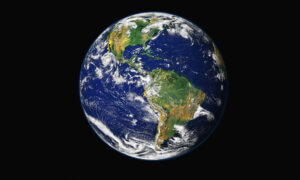Another win for Team Earth! The unexpected ozone hole that opened over the Arctic this spring finally closed, putting environmentalists’ hearts at ease. Did the pandemic have any hand in this?
Specialists say that it didn’t. Although the lockdown did have a positive effect, reducing air pollution significantly, it did not sway the evolution of this particular ozone hole.
That’s, in large, due to the cause of the ozone hole, to begin with. This one emerged suddenly after a polar vortex trapped extremely cold air in the atmosphere above the North Pole. This event led to the formation of high-altitude clouds in the stratosphere, where the ozone layer resides.
What’s so harmful about that? Well, these clouds come with chlorofluorocarbons and hydrochlorofluorocarbons that react with UV rays releasing atoms that deplete the ozone shield that protects Earth from the Sun.
It took experts by surprise because the Arctic’s winter temperatures are usually higher than those in Antarctica meaning a polar vortex is an unusual occurence. To fight it, we simply need warmer weather.
When that happened, the ozone hole – three times the size of Greenland – healed by itself. Although this particular rupture in the ozone shield did not represent a threat to human life, its existence is still troubling: “For the overall health of the ozone layer, this is concerning since Arctic ozone levels are typically high during March and April.”
Such occurences need to be observed and kept under scrutiny, since they may reveal more about the future of the environment and our lives. At least, humans did one good thing back in the late 80s, by signing the Montreal Protocol. Then, 197 countries agreed to phase out chemicals like chlorofluorocarbons; if that hadn’t happened, this Arctic ozone tear would have had unimaginable consequences.
Follow TechTheLead on Google News to get the news first.























